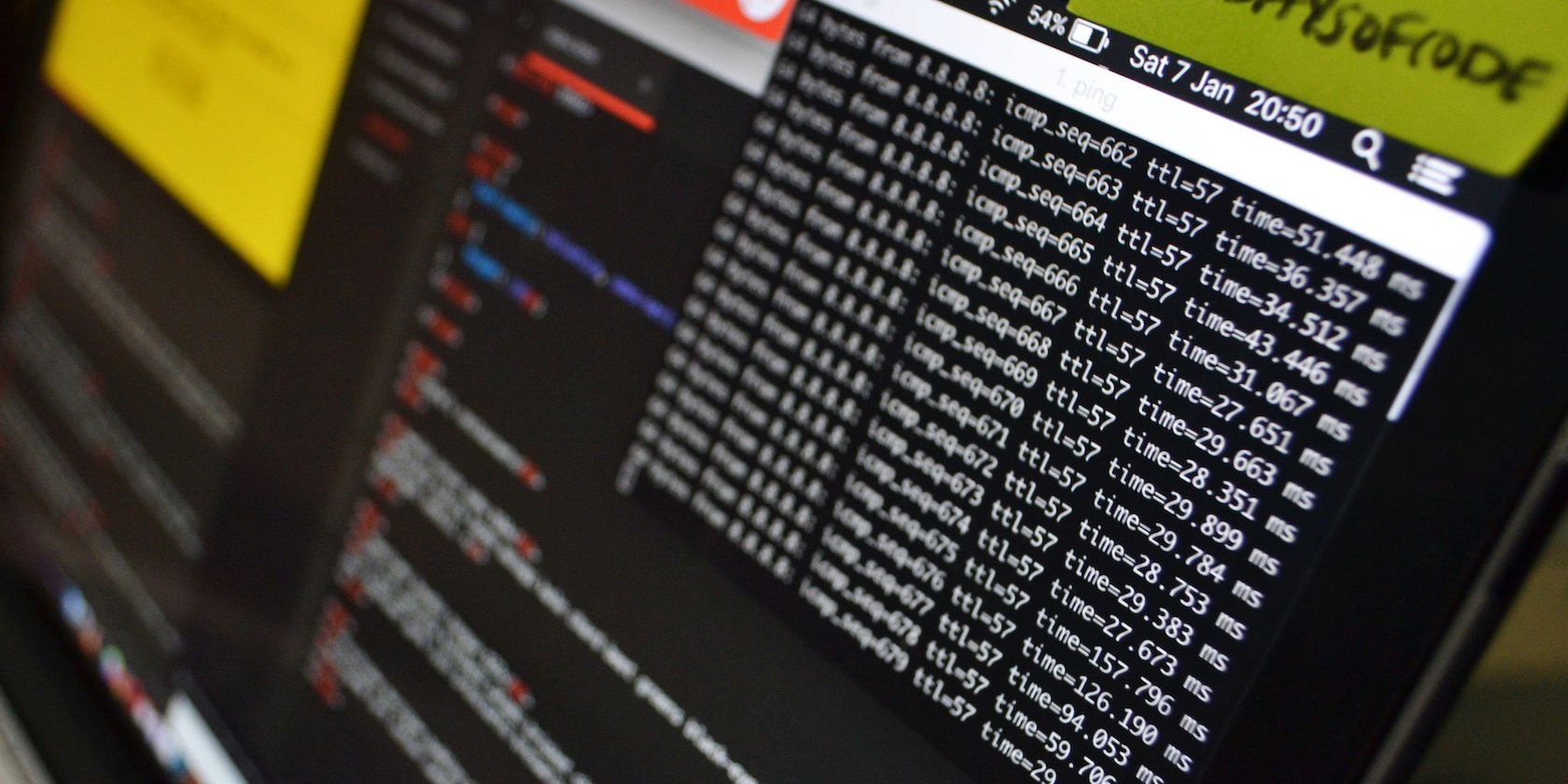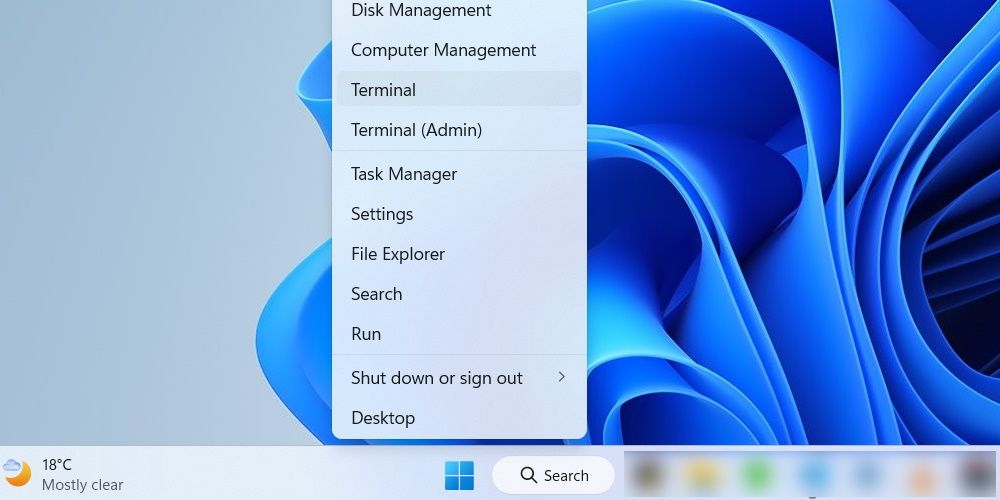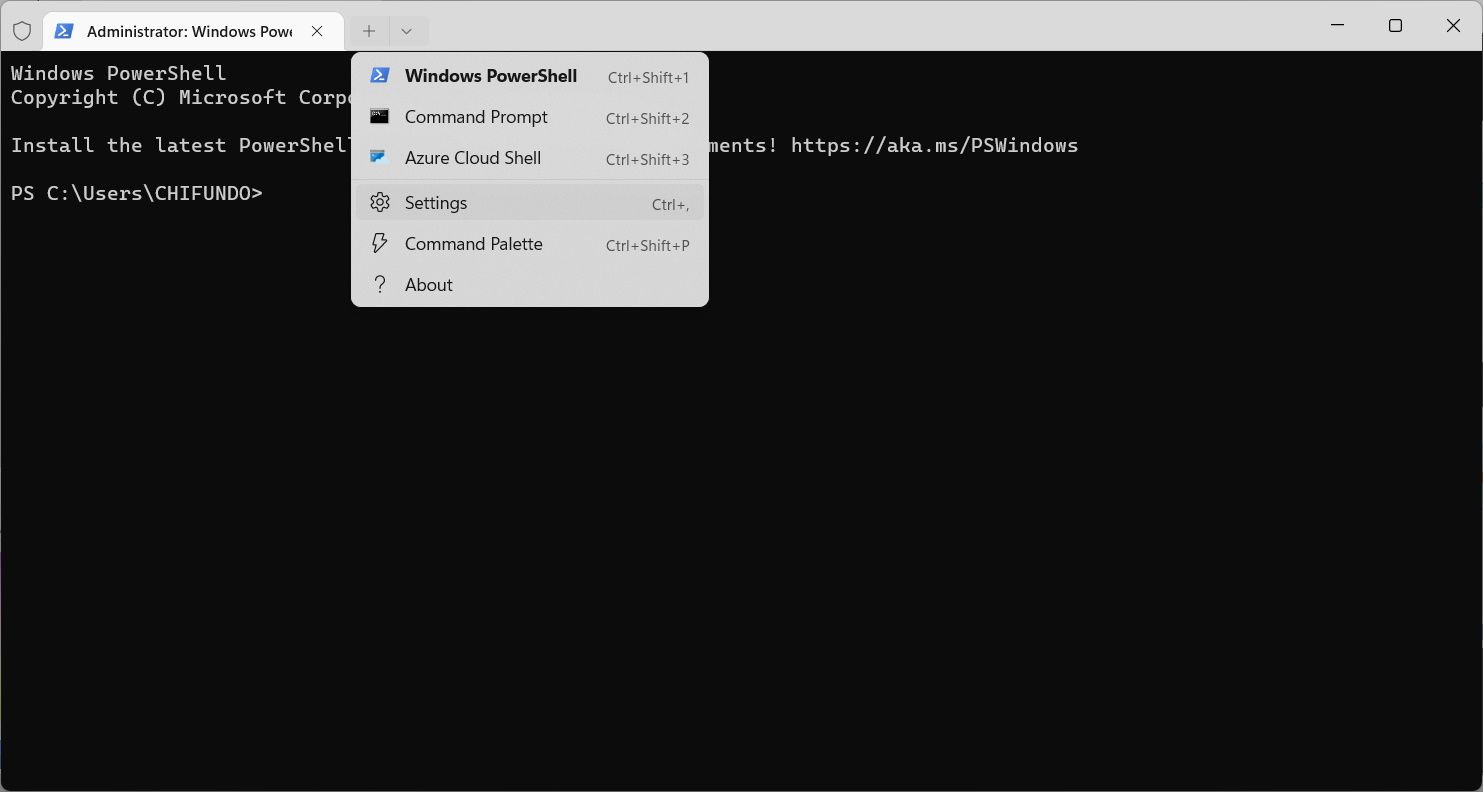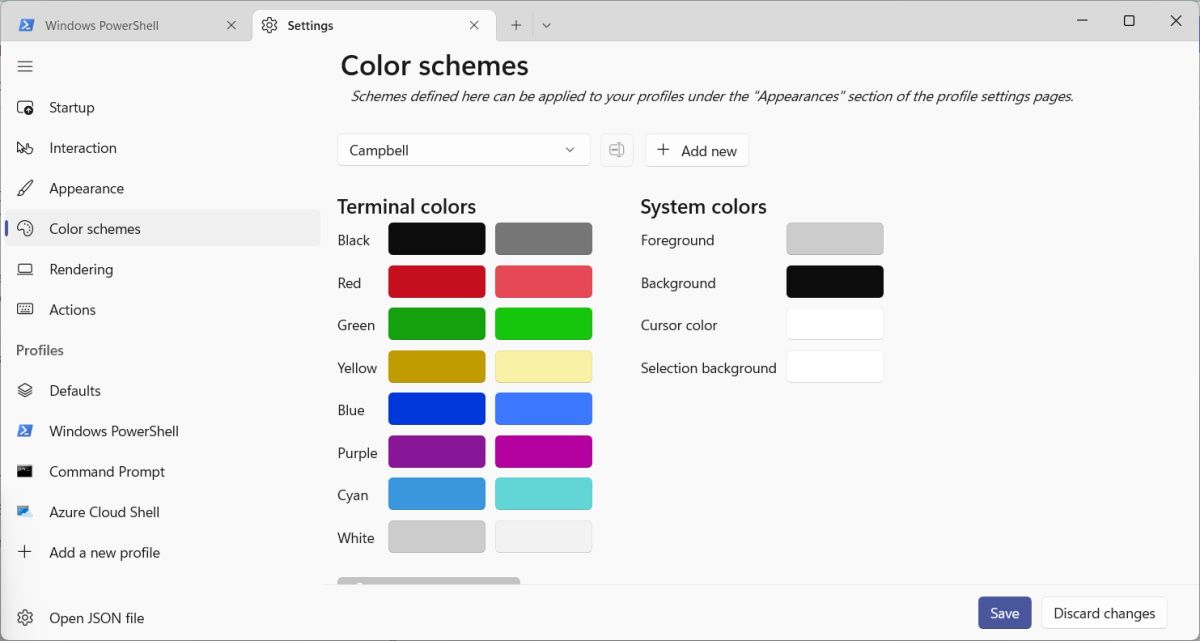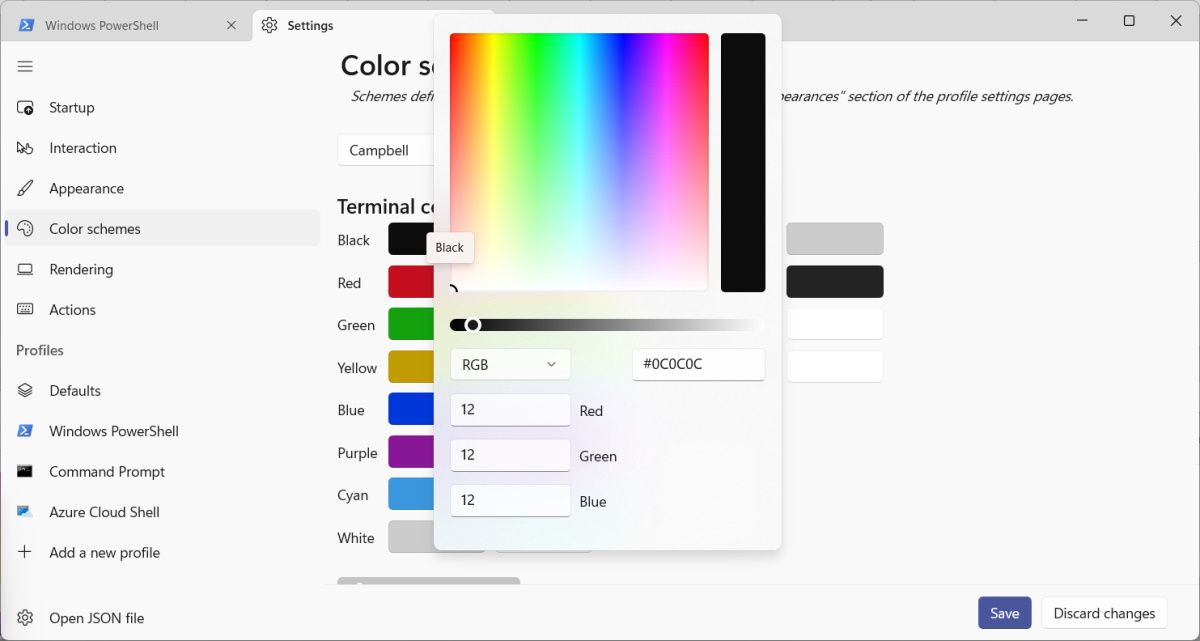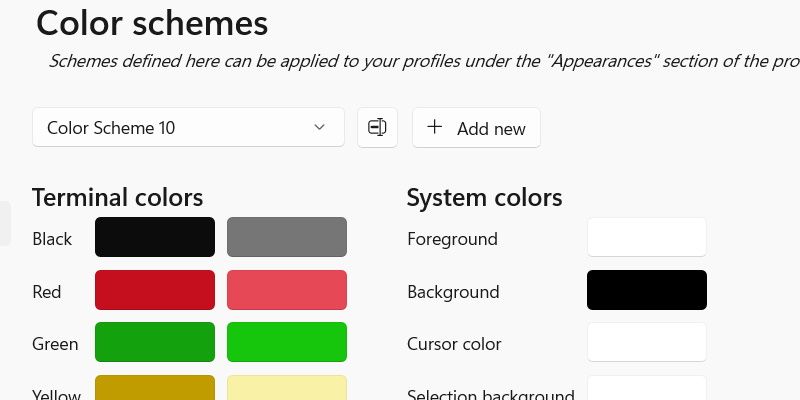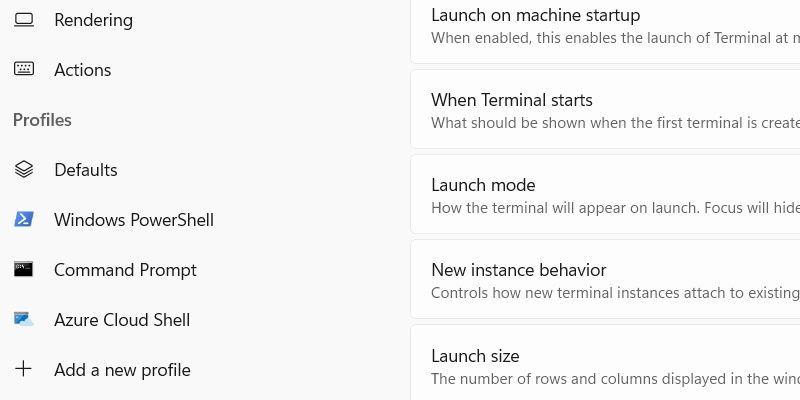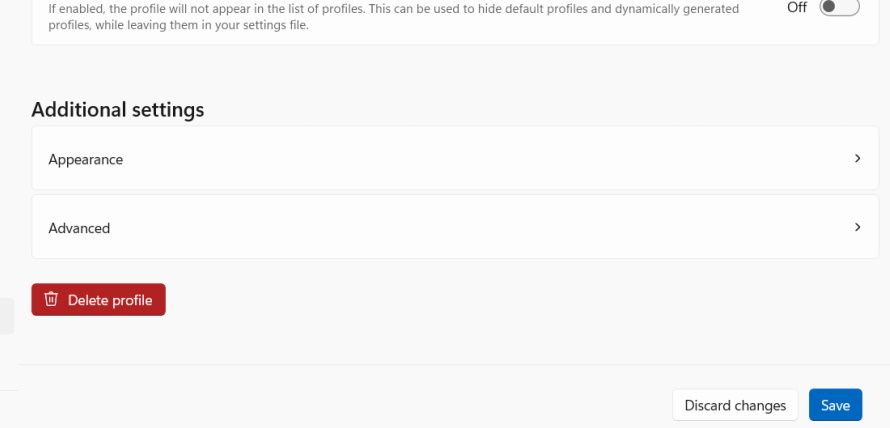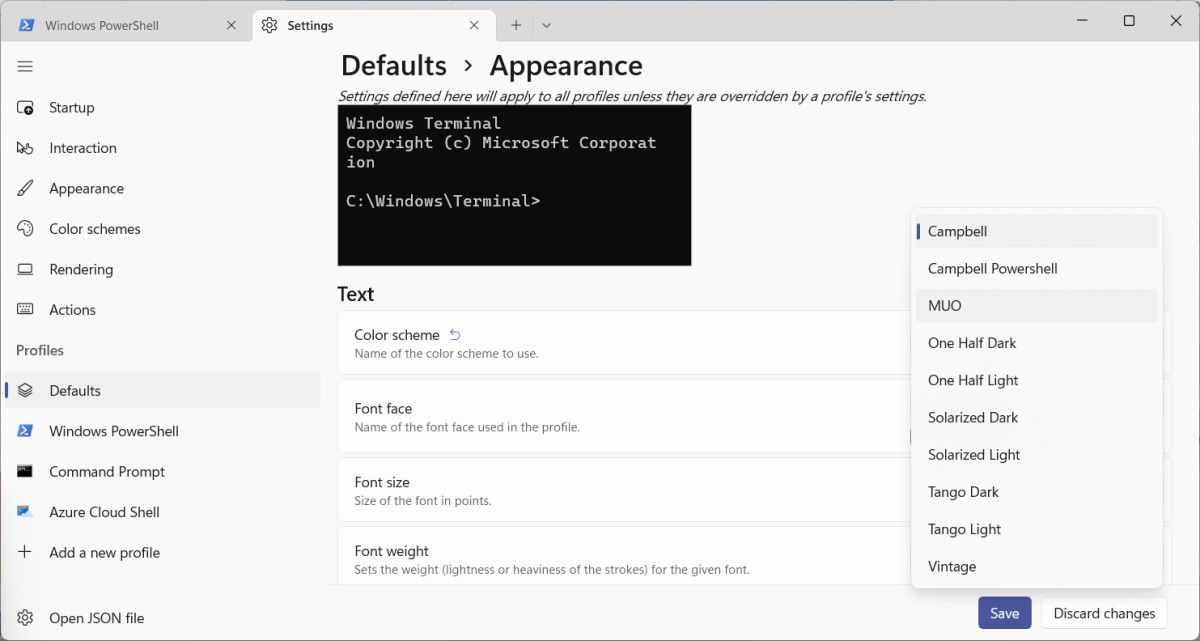Whether you’re using Windows Terminal for Command Prompt, PowerShell, or command line profiles, there are a variety of color schemes you can pick to personalize how they look. But if you don’t like any of the default color schemes, you can edit them or even create your own. That way, you can make the colors for the cursor, background, foreground, selections, and other visual elements your own.
Here’s how to edit or create a color scheme in Windows Terminal. We’ll even show you how to apply it to your Terminal profiles once you're done.
How Do I Edit a Color Scheme in Windows Terminal?
Editing the color scheme is just one of the many ways you can customize the Windows Terminal. To do that, follow the steps below:
-
Right-click Start and select Terminal.
-
In the tab bar at the top, click on the dropdown arrow and select Settings from the menu.
- On the left side menu, select Color Schemes.
- Click on the dropdown menu in the right panel and select the color scheme you want to edit.
-
Under Terminal colors or System colors, you’ll see several options, such as Black, Red, White, Foreground, and Background, with a color next to them. Click on the color to bring up the editor.
-
In the color editor, you can adjust the slider to make the color lighter or darker or enter a new hexadecimal color value in the text box below. You can also click the dropdown, select either RGB or HSV in the menu that appears, and enter new values to change the color completely.
- When you’re done, click Save in the bottom right corner to save your changes.
How Do I Create a Color Scheme in Windows Terminal?
If you don’t want to mess with the default color schemes, why not create your own? Follow the steps below to do just that:
- Right-click Start and select Terminal.
- In the tab bar at the top, click on the dropdown arrow and select Settings from the menu.
- On the left side menu, select Color Schemes.
-
In the right panel, click on the Add new button, and you’ll see the new scheme appear next to the dropdown. It will have a generic name like Color Scheme 10 or something else.
-
Click on the Rename button next to the dropdown, give the custom scheme a name, and then click the blue checkmark to save it.
- Change the colors in the Terminal colors and System colors sections to something you like by clicking on them to bring up the editor.
- In the color editor, you can adjust the slider to make the color lighter or darker or enter a new hexadecimal color value. You can also click the dropdown, select either RGB or HSV in the menu that appears, and enter new values to change the colors completely.
- When you’re done, click Save in the bottom right corner to save your changes.
How to Apply a Color Scheme in Windows Terminal
After editing or creating the color scheme, you can apply it with a few clicks. Follow the steps below:
- Right-click Start and select Terminal.
- In the tab bar at the top, click on the dropdown arrow and select Settings from the menu.
-
In the Profiles section of the left side menu, select Defaults if you want to apply the scheme to all profiles or select a specific profile, such as Windows PowerShell or Command Prompt, to apply it to that particular one.
-
In the Additional settings section at the bottom of the right panel, click Appearance.
-
In the Text section, click on the dropdown next to Color scheme and select the edited or custom color scheme that you want to apply.
- When you’re done, click Save in the bottom right corner to save your changes.
Customizing Color Schemes in Windows Terminal Is Easy
Color schemes are highly customizable in Windows Terminal. That’s a good thing because you can make the profiles appear just how you like them. And the beauty about it is that Terminal offers a graphical way to do it.

